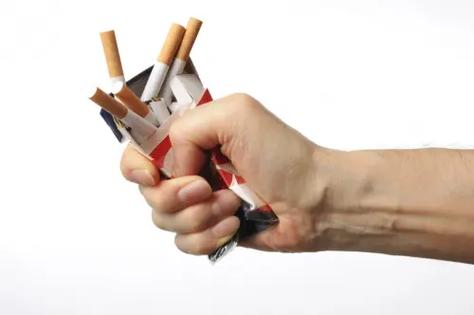The Unseen Link: How Smoking Exacerbates Keratoconus Severity and Complicates Treatment
If you or someone you care about is navigating life with keratoconus, you're already familiar with the challenges: the blurry vision, the constant need for new prescriptions, the sensitivity to light, and the underlying anxiety about the future of your eyesight. It's a journey that demands proactive management. While genetics and eye rubbing are often discussed, there's a critical, modifiable factor that doesn't receive enough attention: smoking. The connection between lighting a cigarette and the progressive thinning of your cornea is not just a vague warning; it's a scientifically supported reality that can significantly alter the course of the disease.
Keratoconus, for those newly diagnosed, is a non-inflammatory eye condition where the normally dome-shaped cornea thins and gradually bulges outward into a cone-like shape. This distortion prevents light from focusing correctly on the retina, leading to distorted, blurry vision and increased sensitivity to light. It’s a progressive condition, meaning it can get worse over time, typically starting in the late teens to early twenties.
So, where does smoking fit into this picture? To understand that, we need to delve a little into the biology of both the habit and the disease.
The Cornea Under Siege: Oxidative Stress and Weakened Collagen
Your body is in a constant state of balance between producing free radicals (unstable molecules that can damage cells) and using antioxidants to neutralize them. This balance is called oxidative balance. The corneal tissue, particularly its structural framework made of collagen, is highly susceptible to oxidative damage.
Now, introduce cigarette smoke. It is a notorious powerhouse of toxic chemicals and free radicals. With every puff, you're inundating your system, including the delicate tissues of your eyes, with an overwhelming number of these damaging molecules. This tips the scale dramatically, creating a state known as oxidative stress.
In a person with keratoconus, the cornea is already structurally vulnerable. The collagen fibers that give the cornea its strength and shape are weaker. Chronic oxidative stress from smoking directly attacks these already compromised fibers, further weakening the corneal structure and potentially accelerating the progression of keratoconus. Think of it like termites quietly gnawing at the wooden frame of a house that already has a shaky foundation. The damage might be invisible at first, but it critically undermines structural integrity over time.
Furthermore, the health of the corneal cells, particularly the corneal fibroblasts (keratocytes) responsible for maintaining and repairing collagen, is compromised by the toxins in smoke. This impairs the cornea's innate ability to repair itself, making it less resilient to the natural mechanical stress caused by blinking and, yes, even gentle eye rubbing.
Beyond the Cornea: Systemic Inflammation and Eye Health
The impact of smoking isn't localized. It creates a state of chronic, low-grade inflammation throughout the entire body. This systemic inflammation can affect all organs, and the eyes are no exception. Inflammatory markers circulating in the bloodstream can disrupt the delicate environment of the eye, creating conditions that are unfavorable for corneal stability.
For individuals with keratoconus, managing this inflammatory burden is crucial. Adding the systemic inflammatory effects of smoking to the mix is like pouring gasoline on a smoldering fire. It creates an internal environment that is primed for disease progression, making it harder for the eye to maintain any semblance of stability.
The Practical Consequences: How Smoking Relates to Clinical Severity
This isn't just theoretical. Numerous clinical studies have observed a tangible link between smoking and worse keratoconus outcomes. What does this look like in the ophthalmologist's office?

- Faster Progression: Smokers with keratoconus may experience a more rapid thinning and steepening of the cornea compared to non-smokers. This means their prescription can change more frequently, and their vision quality can deteriorate at a quicker pace.
- Increased Severity at Diagnosis: Studies have shown that smokers who develop keratoconus often present with more advanced disease at the time of diagnosis. Their corneas are often thinner and more conical from the outset.
- Impact on Corneal Cross-Linking (CXL): Corneal cross-linking is the gold-standard treatment to halt the progression of keratoconus. It works by using riboflavin (Vitamin B2) and UV light to create new chemical bonds within the cornea, stiffening it. However, the effectiveness of CXL can be influenced by the overall health of the corneal tissue. The negative impact of smoking on corneal cross-linking outcomes is a genuine concern. A cornea weakened by chronic oxidative stress and poor cellular health may not respond as robustly to the cross-linking procedure. There is emerging discussion among specialists about whether smokers might have slightly lower success rates or require closer monitoring post-surgery.
- Complications with Contact Lenses: Many people with keratoconus rely on specialty contact lenses like scleral lenses to achieve clear vision. Smoking is a known irritant to the ocular surface. It can worsen dry eye disease, leading to increased discomfort, poor lens tolerance, and a higher risk of corneal abrasions or infections while wearing lenses. Managing contact lens discomfort for keratoconus patients who smoke becomes an added challenge for both the patient and the eye doctor.
Addressing the Elephant in the Room: A Message of Empowerment, Not Judgment
If you smoke and have keratoconus, reading this might feel overwhelming. It's essential to approach this information not with a sense of guilt or panic, but with one of empowerment. Unlike your genetic predisposition, smoking is a factor you have direct control over. Quitting is arguably one of the most powerful single actions you can take to actively manage your keratoconus and protect your long-term vision.
The benefits of quitting begin almost immediately:
- Reducing Oxidative Stress: Within a short time of quitting, the overwhelming flood of free radicals subsides, allowing your body's natural antioxidant defenses to regain control. This removes a constant source of attack on your corneal collagen.
- Lowering Inflammation: Systemic inflammation levels begin to drop, creating a more stable internal environment for your entire body, including your eyes.
- Improving Overall Eye Health: Better tear film quality, reduced risk of infections, and improved healing capacity all contribute to better management of keratoconus and greater comfort, especially with contact lenses.
Creating Your Action Plan: Vision Health is Holistic Health
Managing keratoconus effectively requires a multi-pronged approach. Here’s how you can build a robust plan:
- Have an Honest Conversation with Your Ophthalmologist: This is the most critical step. Be open about your smoking history. Your doctor is not there to judge you; they are there to help you achieve the best possible outcome. They can tailor your monitoring schedule and treatment recommendations based on a complete understanding of your risk factors.
- Seek Support to Quit Smoking: You don't have to do it alone. Talk to your primary care physician about smoking cessation programs, medications, or nicotine replacement therapies that can dramatically increase your chances of success. Framing quitting as a vital part of your keratoconus management and prevention strategy can provide powerful motivation.
- Bolster Your Defenses Nutritionally: While quitting smoking is paramount, you can also support your corneal health from the inside out. Adopt a diet rich in antioxidants. Think colorful fruits and vegetables, nuts, and seeds. Nutrients like Vitamin C, which is crucial for collagen production, and Omega-3 fatty acids, which help combat inflammation, are particularly important. Consider discussing antioxidant supplements with your doctor.
- Be Vigilant About Avoidance: Strictly avoid eye rubbing. This mechanical stress is a major risk factor for progression. If you suffer from allergies that make your eyes itchy, work with your doctor to manage them aggressively with antihistamines or other therapies.
- Adhere to Follow-up Appointments: Keratoconus requires lifelong monitoring. Regular scans with a corneal topographer are essential to detect the subtlest signs of progression early, allowing for timely intervention with cross-linking if needed.
In conclusion, the evidence is clear: smoking and keratoconus are a dangerous combination. The habit directly contributes to the severity of keratoconus by accelerating the very processes that weaken the cornea. However, this knowledge is a tool. By choosing to quit, you are taking direct, decisive action to slow the progression of your condition, improve the potential success of treatments like cross-linking, and safeguard your precious vision for years to come. Your eye health is deeply connected to your overall lifestyle choices, and every positive change you make is a step toward a clearer, brighter future.














